Archaeologists Discover 1,200-Year-Old Mummy Tied With Rope
Archaeologists excavating an underground tomb in Peru have uncovered a strange mummy preserved fully bound up in ropes, with its hands covering its face. The remains of the individual, whose sex has not been identified, was found at the Cajamarquilla archaeological site, some 16 miles from the capital city of Lima.
According to the team, the mummy dates back 1,200-800 years and belonged to the pre-Inca civilisation that developed between the Peruvian coast and mountains.
The excavation at Cajamarquilla is being led by archaeologist Pieter Van Dalen Luna of the California State University-San Marcos.
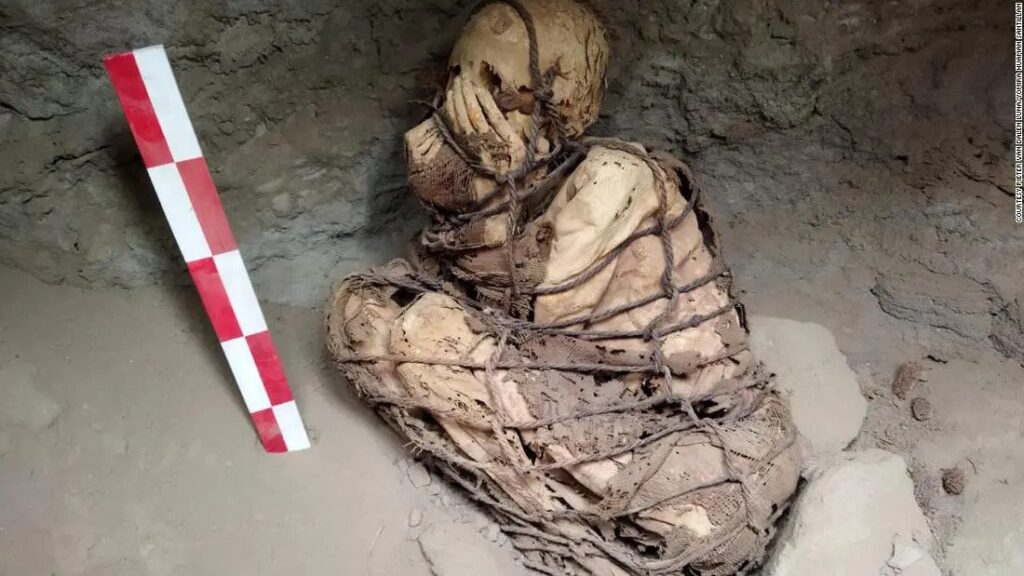
‘The main characteristic of the mummy is that the whole body was tied up by ropes and with the hands covering the face,’ Professor Van Dalen Luna said.
This elaborate binding, he explained, ‘would be part of the local funeral pattern.’
The mummified individual, Professor Van Dalen Luna explained, would have lived in the high Andean region of what is today Peru — some 600–200 years before the rise of the Inca people.
‘Radiocarbon dating will give a more precise chronology,’ he added.
The underground tomb in which the mummy was found also harboured other funerary offerings. Among these discoveries were stone tools and ceramic pots within which were traces of vegetable matter, the archaeologists said.
The team added that the nature of the burial indicated that the region would have been multi-ethnic in the late pre-Hispanic period. Peru is home to hundreds of archaeological sites derived from cultures that developed both before and after the Inca Empire.
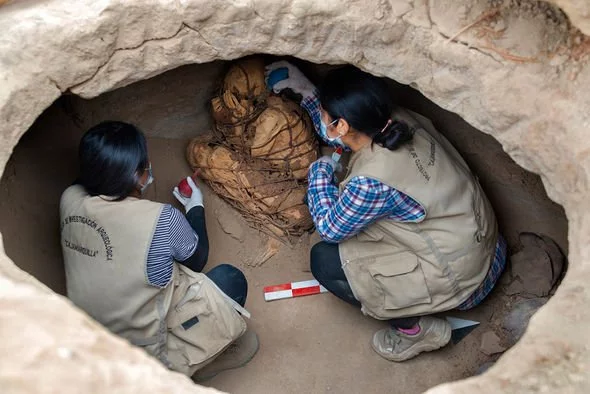
The Inca once dominated the southern part of South America, all the way from southern Ecuador and Colombia to central Chile, and first arose in the Peruvian highlands sometime in the early 13th Century.
The Incan Empire fell at the hands of the Spanish conquistadors, who began their invasion in 1532 and seized the Inca’s last stronghold in 1532.
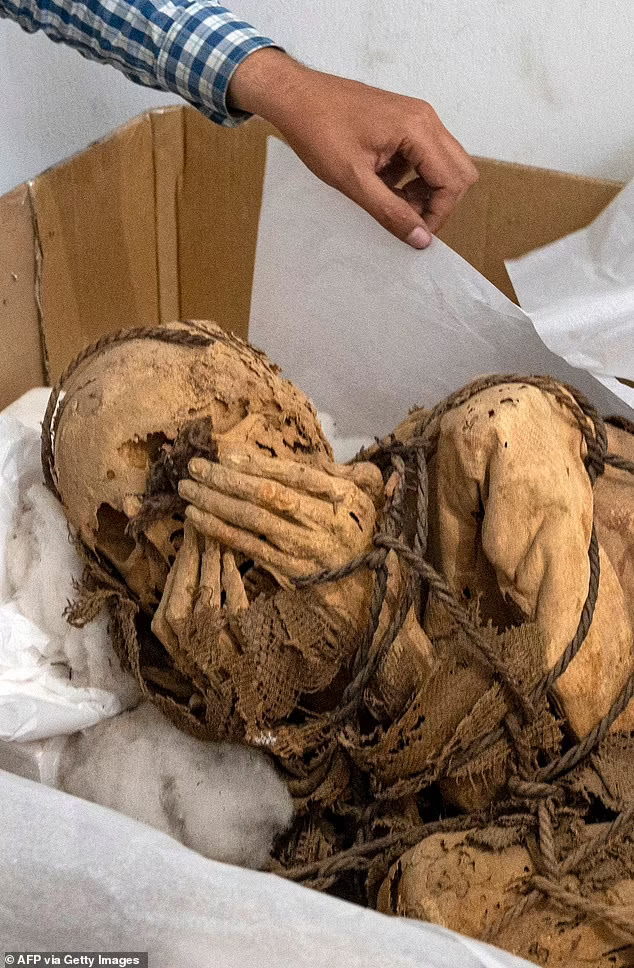
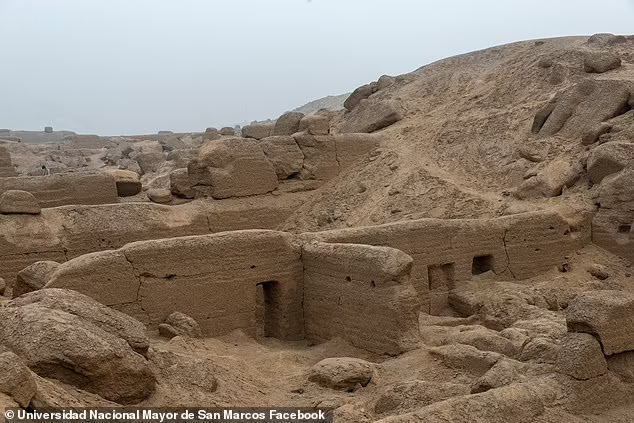
WHY DID ANCIENT SOUTH AMERICAN CULTURES SACRIFICE THEIR CHILDREN?
Child sacrifice seems to have been a relatively common occurrence in the cultures of ancient Peru, including the pre-Incan Sican, or Lambayeque culture and the Chimu people who followed them, as well as the Inca themselves.
Among the finds revealing this ritual behaviour are the mummified remains of a child’s body, discovered in 1985 by a group of mountaineers.
The remains were uncovered at around 17,388ft (5,300 metres) on the southwestern ridge of Cerro Aconcagua mountain in the Argentinean province of Mendoza. The boy is thought to have been a victim of an Inca ritual called capacocha, where children of great beauty and health were sacrificed by drugging them and taking them into the mountains to freeze to death.
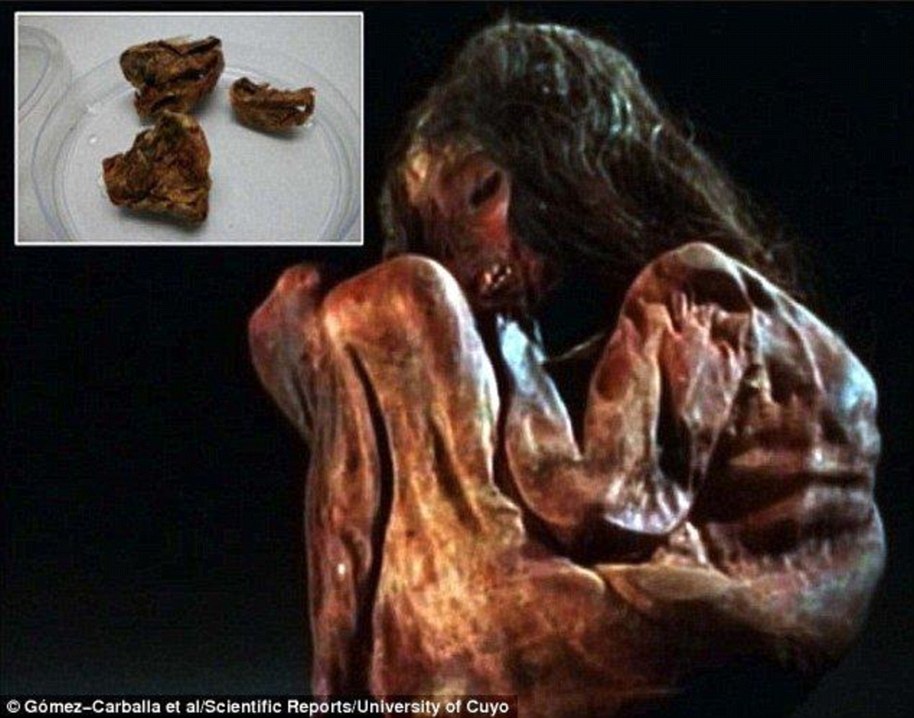
Ruins of a sanctuary used by the Inca to sacrifice children to their gods was discovered by archaeologists at a coastal ruin complex in Peru in 2016. Experts digging at Chotuna-Chornancap, in North Lima, discovered 17 graves dating to at least the 15th century. This included the graves of six children placed side by side in pairs of shallow graves.
Capacocha was a ritual that most often took place upon the death of an Inca king. The local lords were required to select unblemished children representing the ideal of human perfection.
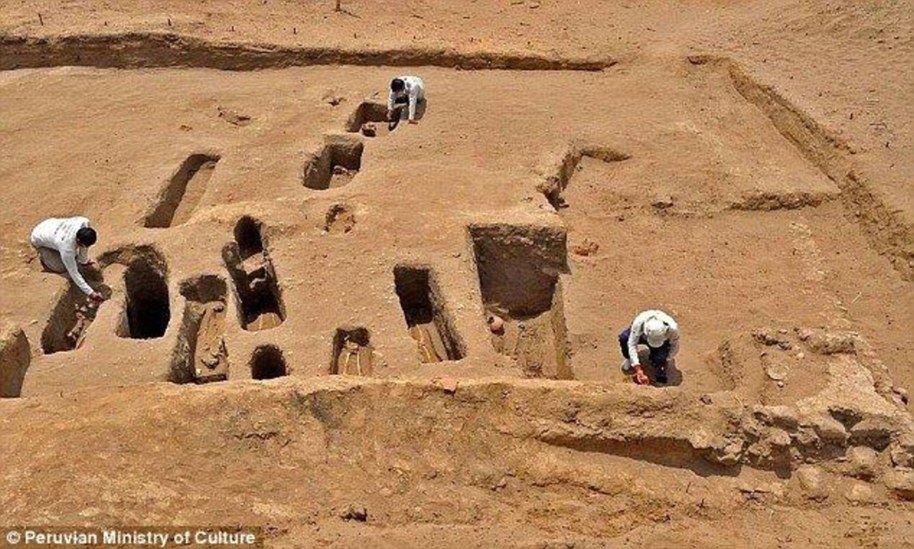
Children were married and presented with sets of miniature human and llama figurines in gold, silver, copper and shell. The male figures have elongated earlobes and a braided headband and the female figurines wore their hair in plaits.
The children were then returned to their original communities, where they were honoured before being sacrificed to the mountain gods on the Llullaillaco Volcano.
The phrase Capacocha has been translated to mean ‘solemn sacrifice’ or ‘royal obligation.’
The rationale for this type of sacrificial rite has typically been understood as commemorating important life events of the Incan emperor, to send them to be with the deities upon their death, to stop natural disasters, to encourage crop growth or for religious ceremonies.





